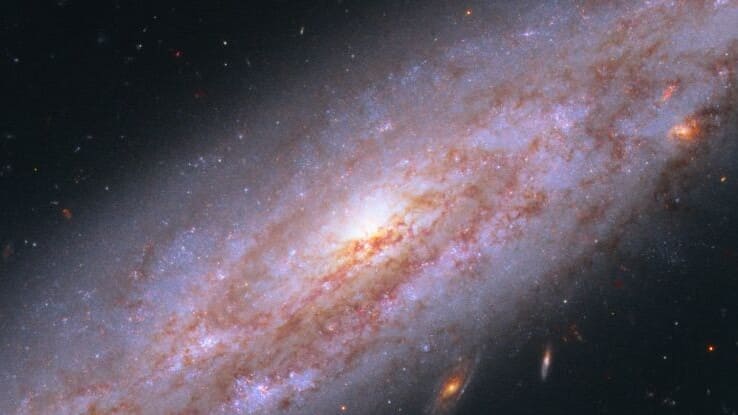
James Webb Space Telescope could solve biggest crisis in cosmology
What's the story
The James Webb Space Telescope (JWST) has provided new insights into the expansion speed of the universe, potentially resolving a long-standing issue known as the Hubble tension. This discrepancy between measurements of the universe's accelerating expansion has puzzled scientists for nearly a century. The latest data from JWST suggests that our local universe is moving away at approximately 70km per second per megaparsec.
Measurement breakthrough
New measurements bring us closer to resolving Hubble tension
The new measurements were obtained using three different types of stars and have been submitted for review in The Astrophysical Journal. Astronomer Wendy Freedman from the University of Chicago stated, "Based on these new JWST data and using three independent methods, we do not find strong evidence for a Hubble tension." She added that it appears our standard cosmological model explaining the universe's evolution is holding up.
Cosmic expansion
Understanding the Hubble constant and its implications
The Hubble constant represents the accelerating expansion rate of the universe. Different types of observables can be used to calculate this constant, each providing unique measures. Observables from the early universe include cosmic microwave background and baryon acoustic oscillations, suggesting an expansion rate of around 67.4km per second per megaparsec. However, signals from nearby universe known as standard candles suggest a slightly higher Hubble constant of approximately 74km per second per megaparsec.
New methods
Freedman's approach to measuring the Hubble constant
Freedman has been exploring alternative methods to measure the Hubble constant, focusing on stars at the tip of the red giant branch (TRGB stars). These stars reach a consistent size and brightness, making them reliable tools for gaging distances to nearby galaxies. Using data from various instruments like Hubble and Gaia, Freedman's team made several TRGB measurements that yielded a Hubble constant of around 69-70km per second per megaparsec.
Telescope contribution
JWST's role in measuring the distance
The JWST, the most powerful space telescope ever made, was used by Freedman's team to measure TRGB and Cepheid variable stars, and a type of carbon-rich giant star. By independently measuring distances to all three stars, they obtained data that could be cross-checked for systematic errors to obtain an independent measurement of the Hubble constant. "Getting good agreement from three completely different types of stars, to us, is a strong indicator that we're on the right track," Freedman said.